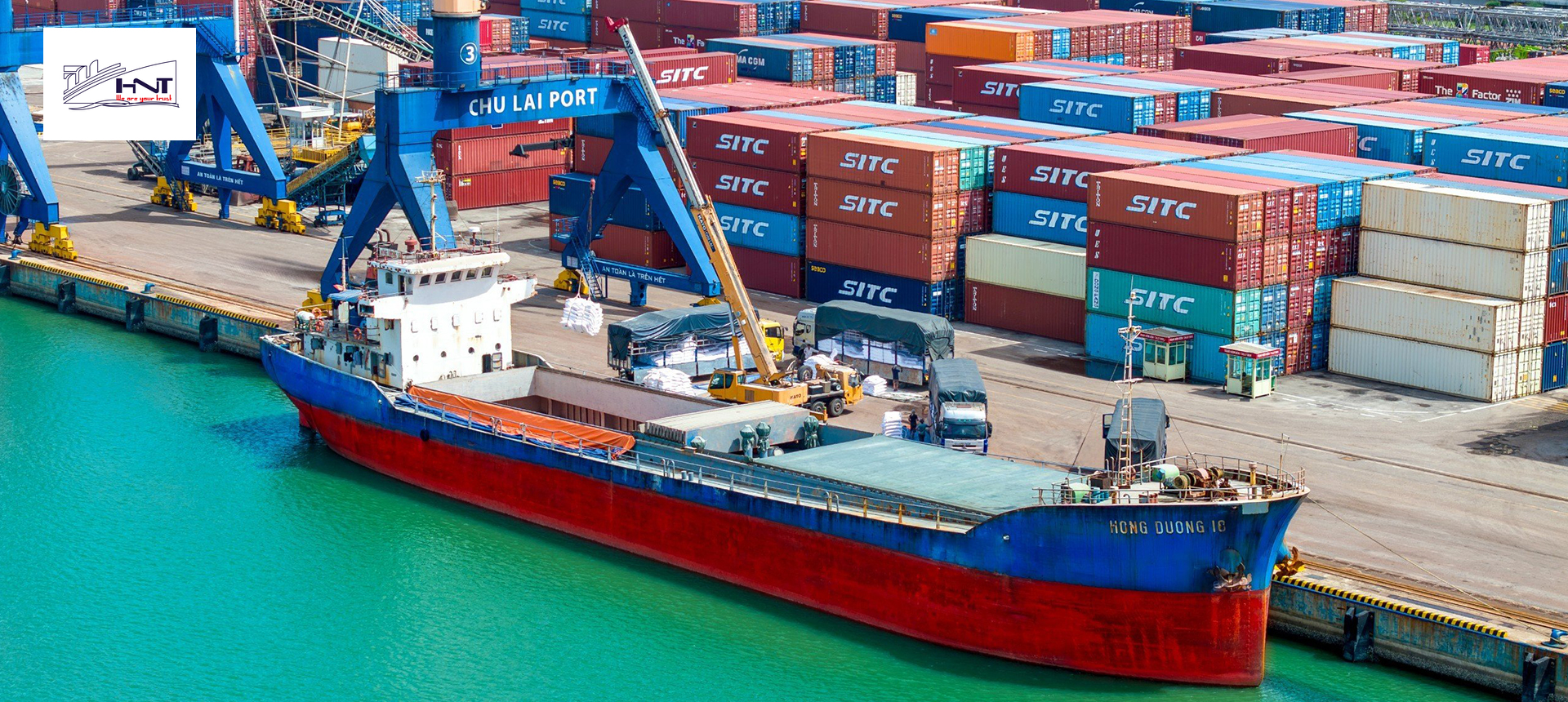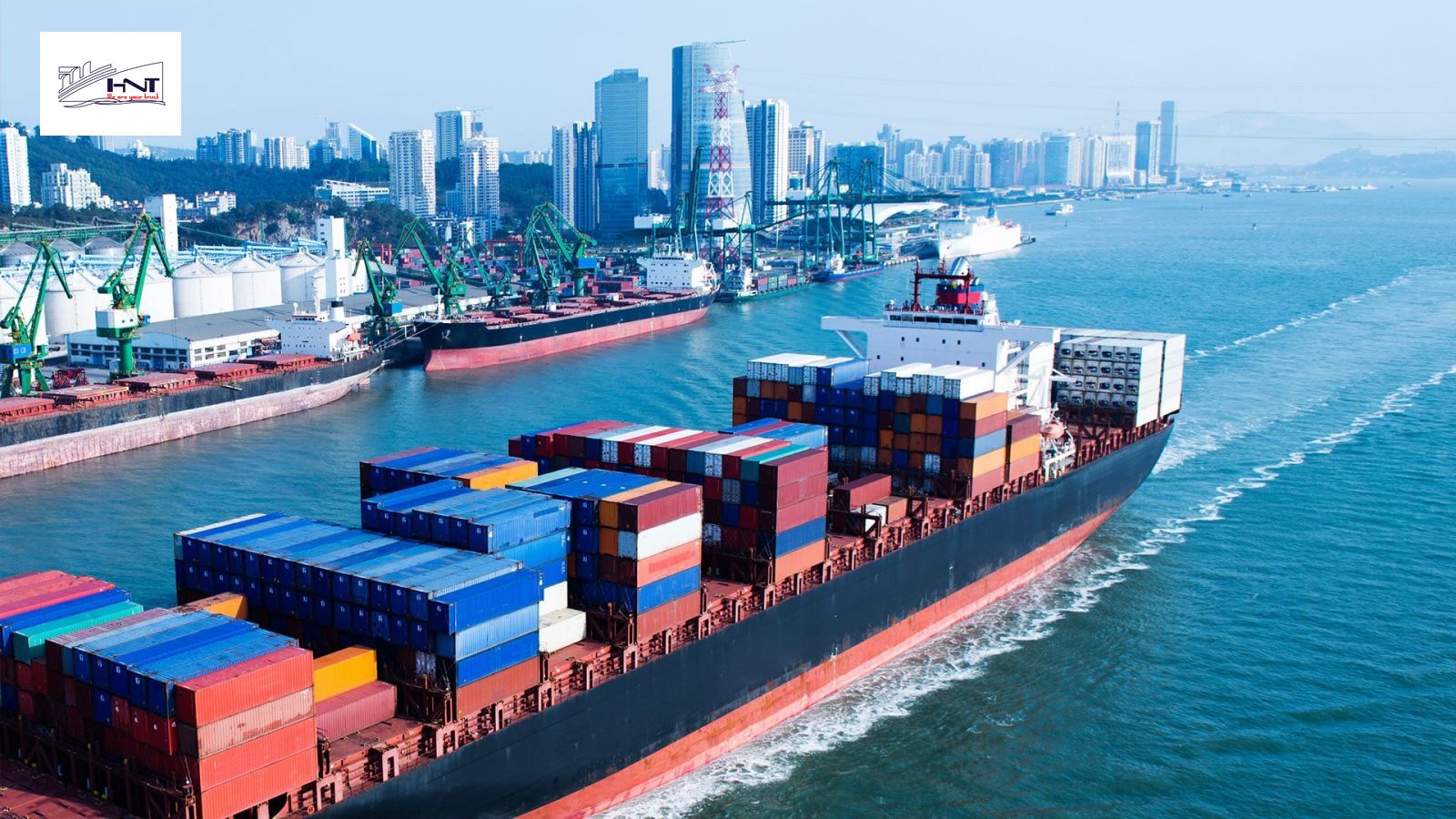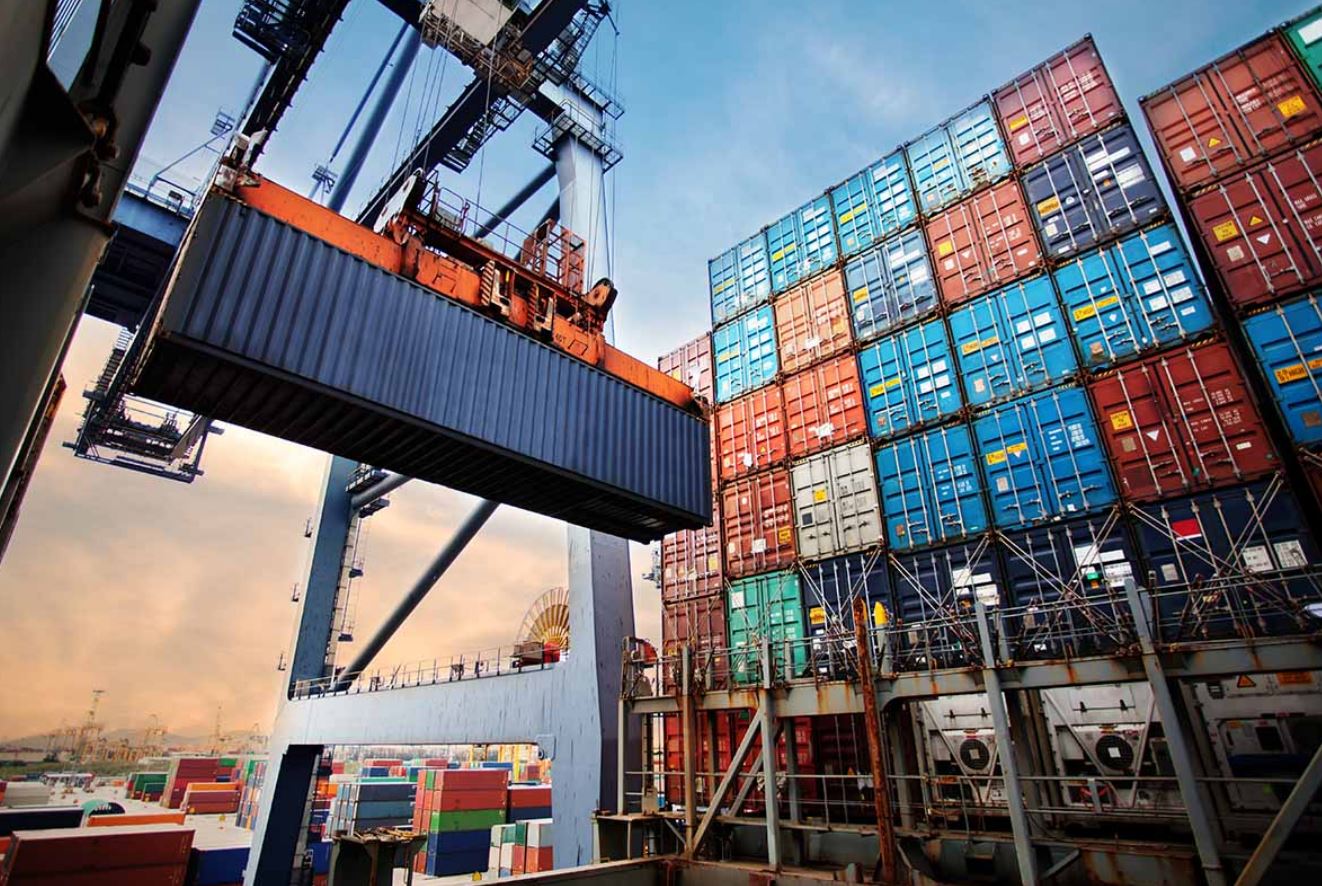What are the disadvantages of sea freight transport, the transit time, the volume of goods, or the types of goods transported by sea? These are some of the most frequently asked questions currently. Due to the continuous development of the global economy, the logistics sector has gradually become the most reasonable and cost-effective method of delivery for businesses and users. This article will provide you with useful knowledge related to this topic. Let's take a look!
Definition of Sea Freight Transport
Sea freight transport is a form of transportation that utilizes various means combined with maritime infrastructure to transport goods. Common means include ships and boats, using cranes and forklifts for loading and unloading cargo. With good infrastructure systems serving sea transport, including large and small seaports, transshipment ports, etc., sea freight transport is the method used by the import-export industry for transporting large quantities of goods with significant weight and size.
When using this method, it is essential to consider whether the type of goods to be transported is necessary. This aims to optimize costs and ensure the safety of goods when transported by sea.
Advantages and Disadvantages of Sea Freight Transport

Advantages
- Able to transport large quantities of goods, including bulky items.
- Almost no restrictions on the number of transport tools or means.
- Extremely reasonable transportation costs, cheaper than many other transport methods.
- Most sea transport routes are natural traffic routes, facing fewer obstacles compared to road transport.
- Contributes to expanding international trade through sea transport.
- High safety, as collisions between cargo ships are rare during transit.
Disadvantages
Besides, transport by sea also exist other restrictions, such as:
- Sea freight transport takes a lot of time, unsuitable for express delivery needs.
- Cannot deliver goods directly inland, requiring the combination of multiple transport methods.
See more: Product Packaging Is What? Function And The Way Of Packing Goods
Main Types of Goods Transported by Sea mostly the type of goods which?

- Containers: Containers are specialized for transporting goods by sea. Goods are packed and placed in containers before transport. Containers are prevalent in sea freight processes, including industrial goods, electronics, garments, canned foods, and many other types of goods.
- Agricultural Products and Food: Agricultural products like rice, corn, beans, coffee, pepper, sugar, and fresh produce like fruits and vegetables are often transported by sea.
- Industrial Goods and Machinery: Large industrial goods, machinery, and equipment are frequently transported by sea. This includes machine parts, electronic devices, industrial machinery, energy equipment, and other industrial components.
- Consumer Goods and Household Items: Sea freight is also used to transport consumer goods and household items such as clothing, shoes, electronics, household appliances, toys, and other consumer products.
- Oil and Chemicals: Petroleum and petroleum products like gasoline, diesel, lubricants, industrial chemicals, and other chemicals are also commonly transported by sea.
Classification of Goods by Transport Method
When using sea freight, goods can also be classified by transport method:
- Transporting with containers for general merchandise;
- Transporting with refrigerated vehicles for specific items;
- Transporting with barges for minerals like coal, sand, and stone.
Goods Unsuitable for Sea Transport

- Temperature-sensitive Goods: Items sensitive to temperature, such as frozen goods or those requiring specific temperature conditions, may not be suitable for sea transport.
- Flammable and Explosive Goods: Flammable, explosive materials, or hazardous substances may not be transported by sea due to safety risks. International and national regulations strictly control the transport of dangerous goods by sea.
- Live Goods: Live goods like animals, plants, or fresh food may not be suitable for sea transport due to special requirements for living conditions and environment.
- Goods with Weight or Size Limits: Items that are too heavy or too large, which cannot meet the technical requirements for the weight and capacity of ships, may not be suitable for sea transport. There are limits to the weight and size of containers and ships, so excessively large or heavy goods may face restrictions in the sea transport process.
Summary
The above information provides a basic understanding of the sea freight transport process and time that readers need to know. Currently, HNT is implementing sea freight services combined with various transport methods for an order. Therefore, for large-volume orders with high specificity, we are committed to flexibly combining sea transport to ensure goods are delivered to customers.
For more detailed information about our delivery services, customers can call 0981.655.880 (Mrs. Thi) for specific advice and guidance!




